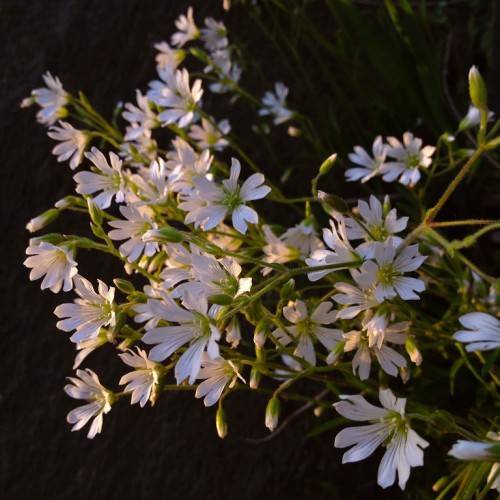
Large Field Chickweed
Cerastium velutinum
Watering:
Minimal
Hardiness Zone:
Sun:
full sun,part shade
Leaf:
Yes
Growth Rate:
Low
Drought Tolerant:
Yes
Salt Tolerant:
Yes
Invasive:
Yes
Care Level:
Moderate
watering
Five-Stamen Chickweed should be watered regularly, but not too much. It prefers a moist soil,so give it water when the top 1 inch of soil feels dry. Water the soil thoroughly and then allow it to dry out before watering again. Make sure the soil is evenly moist throughout the entire pot and do not let it dry out completely. Do not water too frequently, as this can lead to root rot. It's best to water in the morning and avoid getting its leaves wet.
sunlight
Five-Stamen Chickweed should receive around 8 hours of sunlight per day, preferably during the early morning or late afternoon. This plant prefers sun to shade, so it should be placed in an area that has maximum exposure to sunlight. The plant will flourish best if kept in direct sunlight for an extended period of time, such as 6-8 hours daily, or if it is moved to a partially shaded area during the hottest parts of the day. However, the plant should not be exposed to too much sun, as this can scorch the leaves or reduce their health.
pruning
Five-Stamen Chickweed is an annual, often considered to be a short-lived perennial. It is best pruned in late spring, as soon as the flowers appear. This should be done before the seed heads have formed. The goal is to promote a bushier growth habit as well as to prevent excessive self-seeding. Pruning should involve removing any dead, diseased, or damaged stems, and removing the flower stalks to encourage further growth. To keep the plant compact, it may also require occasional selective trimming of stems or branches that are growing too long or too bushy.
